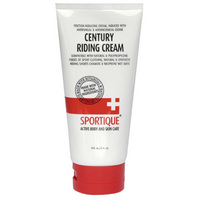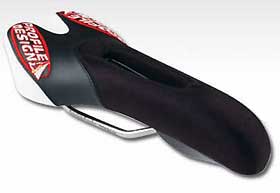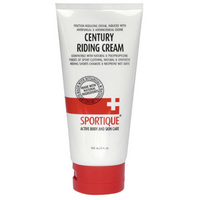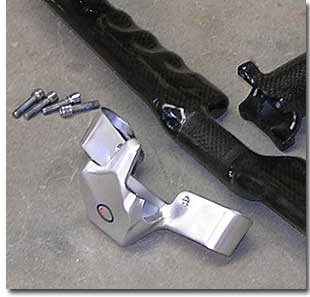Contact points

Every year hundreds, maybe thousands, of triathletes spend $7000 and more to fix problems better solved through $130, $70, or even $10 investments. "How can that be?" you might ask. Why would anyone do that? Simply put, they spend that money because they have problems to solve, they know of no solution other than the $7000 one presented to them, likewise the expert upon whom that athlete relies is naïve to a better, cheaper fix.
You can spot these expensive and problematic solutions fairly easily. These are the custom Serottas and Sevens with outsized head tubes suspending the bike's aero bars several centimeters higher than the elevation of the saddle. Ostensibly, these bikes are built this way to solve comfort or range of motion issues. Maybe in some cases this sort of geometry is justified. I haven't personally witnessed a case.
I repositioned a professional female cyclist on her time trial bike last year, a very strong cyclist—one of the strongest riders on one of the world's best teams—who was conspicuously bad at time trialing relative to her overall strength. She told me she wanted to be fit, "like the professional triathletes" she sees in her town, "who look so comfortable." I placed her saddle on the fit bike I used, and she hopped aboard, and moved right to the rear of that saddle.
"This isn't where those athletes whose positions you admire typically ride," I told her.
"But it's where I'm comfortable," she replied.
I could've left it there. Most fitters would have. But I pressed the issue a bit further. "Exactly what is uncomfortable about sitting toward the nose of this saddle?" I asked.
"It's this seam! It kills me!"
In fact, there was a seam running down the middle of her saddle from the nose back to the saddle's midpoint. I suggested changing the saddle, but she said she couldn't because her team is contractually obligated to ride Selle Italia. I asked if it had to be this Selle Italia. She said almost certainly not, as long as it was a Selle Italia. So I put an SLR T1 on the bike.
She moved right to the front—because she wanted to, not because I asked—and the rest of the fit went smooth as glass.

I recount this story, because this was a fit session ready to go bad. Remember the following rhyme?
For want of a nail the shoe was lost.
For want of a shoe the horse was lost.
For want of a horse the rider was lost.
For want of a rider the battle was lost.
For want of a battle the kingdom was lost.
And all for the want of a horseshoe nail.
This is the typical paradigm during many tri bike fit sessions.
For want of a saddle the position was lost
For want of a position the geometry was lost
For want of the geometry the bike was lost
So, instead of a proper saddle enabling a proper fit enabling the rider to find his proper bike, a $7000 custom bike was purchased to grant the rider the bad position. And all for the want of a saddle.
We bike fitters call this a "point tenderness" problem. This, as distinguished from a position problem. If your stem is too long; or you're sitting too far forward or back; if your saddle, or aerobar, is too high or low; that's a position problem. If your position is correct and you're uncomfortable, perhaps point tenderness is the issue. You've got weight coming down on a spot, and that spot isn't happy.
These point tenderness problems tend to cause fitters, or subjects, to make poor choices. The knee jerk reaction to all problems is, "raise the bars."
I'm uncomfortable.
Raise the bars.
My back hurts.
Raise the bars.
I can't stay in this position for a long time.
Raise the bars.
The wife and I are having trouble at home.
Raise the bars.
Raise the bars. Raise the bars. In my 20 years of doing this, I find "shorten the cockpit" the single most common effectual remedy. "Raise the bars," is actually down the list a ways when it comes to things one can do to fix a bad position. This isn't to say that "shorten the cockpit" is the first thing you do. There is no first thing you do, anymore than "Take two aspirin and call me in the morning," is the appropriate remedy for every ailment. Better to identify the symptoms and then consider the appropriate remedy.
In many cases, perhaps most cases, solving a point tenderness problem opens up the possibility of finding a truly comfortable, powerful, aerodynamic position. So, what are the typical point tenderness problems? And what are the typical solutions?
Point tenderness issues occur wherever you touch the bike. Think about all this encompasses. It's not just the saddle. It's your cycling shorts. Cycling shoes, and socks. Aerobar armrests, and the extensions. The pursuit bar contact points. Even handlebar tape. All that falls into the category of ergonomics, and if you and your bike, as a unit, do not represent an ergonomic match—if your trunk doesn't match your saddle, let us say—you'll probably end up with point tenderness.
Here's an example. Let's say your hand's contact point on your aerobar extensions is not aligned with the armrest. The contact point, where you grab, is too high, or too low, relative to the plane of the armrest. Then your forearm is not going to be laying across the armrest, parallel to the plane of the armrest, but will be angled on a different plane. Your forearm will sit on the very front or back of the armrest, and all that upper body weight will be resting on a fraction of the surface area upon which it was intended to rest. In this case, the pressure on your forearm is considerably higher than it should be. Ouch. That's what I mean by point tenderness.
Accordingly, all these elements I mentioned—shorts, socks, shoes, saddle, armrests, extensions, helmet—these are all much more important to me than the material the frame is made of. They're much more impactful on my riding experience.

I'll mention one further element about point tenderness. There are two root causes: pressure and friction. That latter element, most of you do not give that its proper due. Well, you do with your wetsuit, if you've ever gotten a wetsuit hickie on the back of your neck and gone out and invested in a stick of Bodyglide.
It's just as big a problem during the ride. Even if you have the right bike, the right shorts, right saddle, you've got a lot of loose skin down there that's a part of you you can't leave behind when you board your bike. You can't change "you" for a different model of "you." Often it's you rubbing on yourself that's problematic. I always ride with chamois cream. One might consider it the secret weapon that enables a lot of us who're older, less fit, less strong, but who still wish to ride in the comfortable, powerful and aerodynamic position typical of faster, younger, fitter riders. My muscles and levers still work the same way theirs do. The young bucks can chafe or not, as they so choose. Me, I prefer not to. But I still want to ride the position. The right saddle, some chamois cream, and I'm good to go, during my training and racing both.
Let's reduce all this to action points:
Saddle: find the one that works for you. Take your bike to your LBS, put it on a trainer, and then place a Profile Design TriStryke on it. If that doesn't suit you, put a Fizik Arione Tri 2 on. If your boys (or girls) don't find happiness, try a Selle Italia SLR T1. Some folks like the ISM Adamo, but you have to ride this a particular way. Search our reader forum for threads on the correct technique. If your retailer does not carry these saddles, print out this article, yellow highlight this paragraph, and take it to him. We're talking a few hundred dollars in inventory worth of the single most important bicycle component he needs to have in his store, if it's triathletes he wants to sell to. Tri-specific aftermarket saddles are like tri wetsuits to the experienced triathlon retailer—he'll turn his inventory many times during the year, selling dozens or hundreds of these, because OEM tri bike saddles (the house-branded saddles that come standard on your bike) are rarely very comfortable.

Aerobar: You need four things here. The armrest needs to be comfortable; the extensions need to be comfortable and ergonomic; the armrests and extensions need to be height-compatible with each other; and the bars must be able to tilt up or down to reach the point where you're comfortable. I'm riding a 3T Ventus one-piece bar at the moment. I love it. Why? I love the big, plush, solid armrests; I've taken out the uncomfortable straight extensions and replaced them with Blackwell Wrist Relief extensions; and the "pitch" of the aerobar, while not adjustable, suits me. Note that it took me cobbling together elements from two aerobars in order to make one that I like. Yellow highlight this passage as well. If your retailer is fain to break up two aerobar packages to make one, I have this to say: You're missing an opportunity here! Individualize yourself! Stop serving prepackaged products! Restaurants do not warm up TV dinners for their guests. Likewise, don't sell aerobars like so much Hamburger Helper. Blackwell will sell you their extensions separately. Ask all your aerobar companies to sell you separate components and then, Mr. Bicycle Chef, create!
Apparel: This one's a little tougher, because you can't test ride cycling shorts only to take them back for a refund. Just give a little thought to this before you buy. Go on our reader forum and ask folks what shorts they like the best. Me, I'm preferential to cycling bibs, and Assos, Giordana, Garneau and De Soto are my favorites.
Chamois Cream: We're going to write about this specifically in coming weeks. Assos is my staple, but frankly I can do without the menthol or camphor or whatever it is that gives it that bite. I have some Century Riding Cream showing up, I have high hopes for this (great word of mouth). My advice is to buy real chamois cream, and not bend the use of some other product to mimic chamois cream.
In general: Here's a thought. The next time you ride your bike, while riding ask yourself, "What's the least comfortable part of my body right now?" What bothers you when you ride? Have you identified this? Here's something that can give you hope: Whatever point tenderness, or positional problem, it is that troubles you when you ride, this can be fixed.
It can be fixed, yes, but you must start with the assertive act of identifying the lowest common denominator of your riding experience. What troubles you the most? Fix that first. Then ask yourself again, what troubles you the most? Fix that. Before you know it, nothing will trouble you, and you'll be able to slip aerodynamically through the wind, riding comfortably and powerfully the entire way without ever leaving the aero position save to brake and corner.






